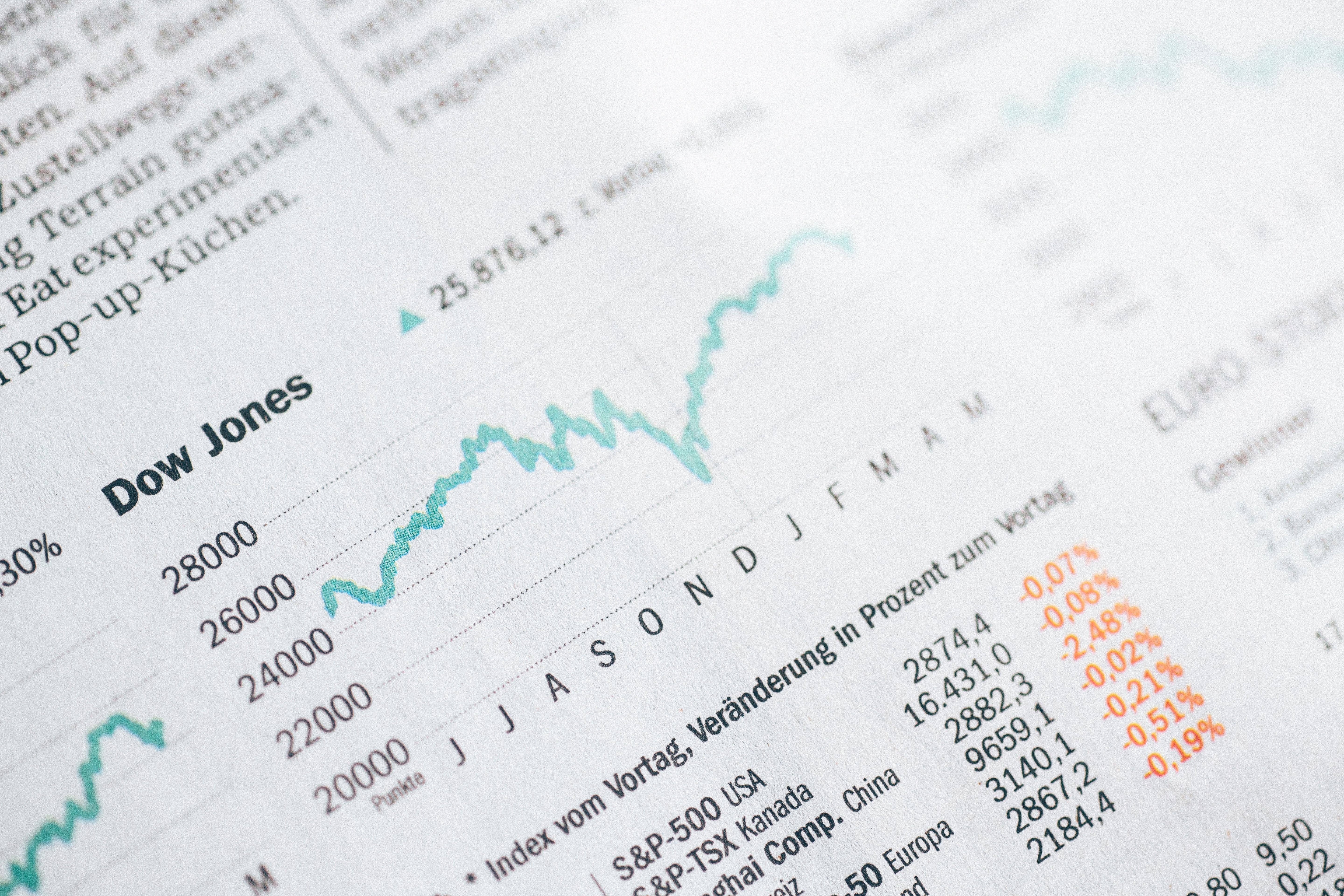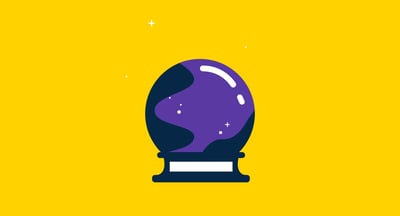March 17, 2023
 by Jason Lin / March 17, 2023
by Jason Lin / March 17, 2023

Cash flow forecasting is one of the most important jobs of any CFO.
Your company relies on you to ensure that it has positive cash flow (meaning more cash is coming into the business than going out) all year round so that it can pay salaries, fund priorities, and meet its financial obligations on time and in full.
Firms often use cash flow software solutions to make business projections and plan financial resources. Before understanding how that works, let us dive into what cash flow is and why it's important today.
The process of projecting a company's incoming and outgoing flow of cash over a period of time is called cash flow forecasting.
The result of a cash flow forecast is a cash flow report that details how much money you expect to take in and spend over a given period of time. This is a useful tool for determining the best course of action in monetary, capital, and financial matters.
Accurate cash flow projection allows companies to estimate their future financial balances, avoid catastrophic cash shortages, and maximize the return on any cash surpluses.
However, accurately predicting your cash flow is a complex matter. Your sales team may close 3 million worth in sales in the first quarter, but it may be another six to twelve months before the company collects that revenue in full. Or your company can make a strategic decision to hire 10 additional sales reps in order to grow your market share, but it can take half a year to recruit and train the new employees and longer for them to sell at full capacity.
Meanwhile, you’ll need the funds to pay their salaries and benefits. Expenses can also be variable, adding many unknowns to your cash flow. For instance, winter is coming. Will it be milder or more severe this year? What will that do to your heating expenses? Will an active hurricane season affect the cost of your raw materials?
The unknowns are the inherent challenge with any kind of forecasting, whether you are an enterprise or a small business. That is why it is vital for firm owners to make business forecasts. This estimates how various natural, economic, political, and seasonal events predict how much cash their company will have on hand 12 to 18 months from now.
Obviously, that’s just not humanly possible.
Cash forecasting may be done over a variety of time periods. The following example from Taulia illustrates a straightforward one-month cash flow prediction for a firm in January, with net cash flow computed as the difference between total inflows and total outflows.
|
Opening cash balance |
$3,000 |
|
Cash inflows |
|
|
Sales |
$15,000 |
|
Total inflows |
$15,000 |
|
Cash outflows |
|
|
Marketing |
$1,000 |
|
Raw materials |
$8,000 |
|
Wages |
$4,000 |
|
Total outflows |
$13,000 |
|
Net cash flow |
$2,000 |
|
Closing cash balance |
$5,000 |
The most accurate technique to forecast your company's cash flow will rely on your business goals, the demands of your management team or investors, and the information that is readily available within your company.
For instance, a firm that wants to monitor debt obligations on a weekly basis would require a different forecasting strategy than one that aims to obtain clarity into quarter-end covenant situations. Debt covenants are financial limitations that a lender imposes on a firm.
Cash flow = cash inflow - cash outflow
Budgeting and forecasting software is an indispensable tool if you are looking to forecast for budgeting your business activities. Additionally, below are three steps to keep in mind throughout the entire process.
In addition to ensuring that a company avoids cash shortages and makes a profit on any cash surpluses, cash flow forecasting also helps businesses succeed in the following ways:
Forecasting cash can feel like an exercise in futility, which is a reason that many CFOs tell us it is one of their primary organizational challenges. Most inaccuracies come from one of three root causes: poor resources, lack of communication, and not having a single forecasting methodology. Let's dive into each below.
Robust data is essential for accurate forecasting, but you need the proper tools and resources to both manage and monitor it. If you’re still using tools like Excel to monitor your cash flow, forecasting is infinitely more difficult.
To begin, data is entered manually, which means it’s prone to error. Additionally, it’s difficult to reflect the complexity of how revenue is booked and how expenses flow through a budget in a spreadsheet. There’s no way around it: spreadsheets will hobble your cash flow forecast.
Resources also apply to people. Employees may not have the time for accurate data collection and analysis. For instance, marketing may provide you with its trade show schedule and anticipated expenses, but shows scheduled in the third quarter may require payment in full in the second quarter.
Obviously, this has a huge impact on the accuracy of your forecast and predictive analytics. You can address these variations in reports by creating standard systems and defining how to project expenses and future cash.
The more standard your systems, the more accurate your cash flow forecasts, and the less time is required on everyone’s part!
Inaccurate cash flow forecasts are often the result of poor communication between business segments. Each department may have its own system for collecting and predicting cash flow, each of which may produce entirely different outcomes.
Eliminating silos between stakeholders will deliver better results. It also ensures all decision-makers that their concerns and voices are heard.
Project management software platforms go a long way in eliminating those silos by ingesting and rationalizing data from multiple departments in real-time in order to create and present a common truth.
A common challenge to accurate cash flow forecasting is the lack of a standard system or methodology used throughout the organization.
This doesn’t just apply to data analysis — it can also apply to data collection and reporting. Many organizations don’t assign a person or department to own the process. Appointing a specific group to put a standard system in place for cash flow forecasting will ensure future accuracy.
Let’s assume that you’ve upgraded your resources, eliminated all silos, and created a team to implement a standard methodology. What are the next steps you can take to increase accuracy and limit negative cash flow -- all while impressing your board? Below are 4 tips you can keep in mind for the same.
Most businesses experience seasonality in their cash on hand, whether an uptick drives that in heating costs or a rush of sales during the holiday shopping season. Getting a handle on these ebbs and flows is essential. Investigate reporting from previous years to identify predictable cash flow swings that span a full year, not just a quarter. This information can be crucial in budget planning and forecasting for the upcoming year.
Evaluate these costs every six to 12 months. Some of these variable expenses can be reduced by re-negotiating a contract or making slight adjustments to the budget. These potential savings can have an overall positive impact on monthly or quarterly cash flow, especially during a down period.
Scenario planning is absolutely essential for accurate cash flow forecasting. Surprises will always come up, adding uncertainty to your plan and forecasts. Scenario planning is the best way to mitigate that uncertainty and an easy way to test standard changes to your key business drivers.
For instance, your company has set a goal for sales revenue over the next 12 months. You can take your current sales forecast and project how 10 percent more sales and 10 percent fewer sales will affect your cash flow. Presenting multiple scenarios to your board will certainly impress them.
Reforecast regularly. Forecasts are your best guesses as to what lies ahead. Predicting unforeseen trends and opportunities 12 to 18 months in advance is difficult in the best cases and nearly impossible when the market or your industry is experiencing uncertainty or volatility. That’s why rolling forecasts are the best way to drive accuracy in your cash flow forecasts.
A rolling financial forecast allows you to project out as the year progresses to accommodate trends that affect key business drivers. Typically, with a quarterly rolling forecast, businesses project approximately four to six quarters ahead, irrespective of the calendar date or year.
Many businesses rely on Excel to build their forecasts, but this approach has inherent challenges, beginning with the near impossibility of representing the complexity of a business structure in a spreadsheet.
Finance teams tend to build a business plan on multiple sheets and tie them together with complex macros and formulas that often break.
Manual labor aside, this approach limits the strategic value of a forecast. The manual nature of entering and manipulating data in a spreadsheet means your forecast is essentially a static snapshot in time. Keeping up with the pace of business will elude even the most proficient power users.
More concerning, a rolling forecast is the best way to keep your eye on cash flow issues and spot any variances to your cash flow projections as early as possible. The sooner you identify a potential issue, the sooner you can raise it to your management and board so they can adopt a contingency plan.
You don’t want to be in a position of telling the board that the company needs to take out a short-term loan in order to make payroll!
So, how do you actually implement all of these suggestions? It’s hard enough to create an annual budget. How do you add rolling forecasts to your to-do list?
There are numerous platforms designed for the finance team that has come to market. Adopting one of them will help you drive accuracy in your cash flow forecasts and awe your board. This is called adopting an intelligent forecast.
Intelligent forecasting offers far more than a snapshot of the business. It combines past and present financial information with your assumptions about impending economic conditions so that you can predict the future health of your business. It will also enable you to provide your leadership team with precise, data-driven insights to guide their decision-making.
Like all robust project management platforms, intelligent forecasting solutions act as a central repository of data, enabling you to drill down into that data in order to understand the forces that drive financial health and implement course corrections.
For instance, let’s assume that overall sales are lower than projected, which means you need to explain why that’s the case to your board. You can drill down to the sales data, pinpoint the region or sales office that is falling short, and then look deeper as to the potential causes.
It may be that a region has experienced attrition of key sales personnel and that the replacements are still ramping up. This level of insight -- available 24/7 -- lets you assess if issues will be resolved in due course or if specific actions are needed to get things back on track.
Intelligent forecasting allows you to be more assertive about your cash flow forecasts because your assumptions are backed by data. That underlying data will likely change over time, but that’s okay. All boards realize that business is dynamic, and your ability to tell them quickly and easily why your cash flow forecast has evolved will certainly impress them.
Using intelligent forecasting solutions, alongside identifying and addressing the key reasons why most cash flow forecasts fail and re-forecasting regularly, will help you better predict your future cash flow and, in turn, impress your board.
Cash is the fuel for your business. Learn how your business can stay cash flow positive all year round!
This article was originally published in 2019. The content has been updated with new information.
Jason Lin is Chief Financial Officer at Centage, home of
Corporate Performance Management (CPM)
I’ve always been fascinated by the power of data.
.png) by Tanuja Bahirat
by Tanuja Bahirat
A gaze into the future would be a good leg up for businesses everywhere.
 by Mary Clare Novak
by Mary Clare Novak
Product launches. Webinars. Co-marketing campaigns. Email newsletters. None of these marketing...
 by Lauren Pope
by Lauren Pope
Corporate Performance Management (CPM)
I’ve always been fascinated by the power of data.
.png) by Tanuja Bahirat
by Tanuja Bahirat
A gaze into the future would be a good leg up for businesses everywhere.
 by Mary Clare Novak
by Mary Clare Novak


